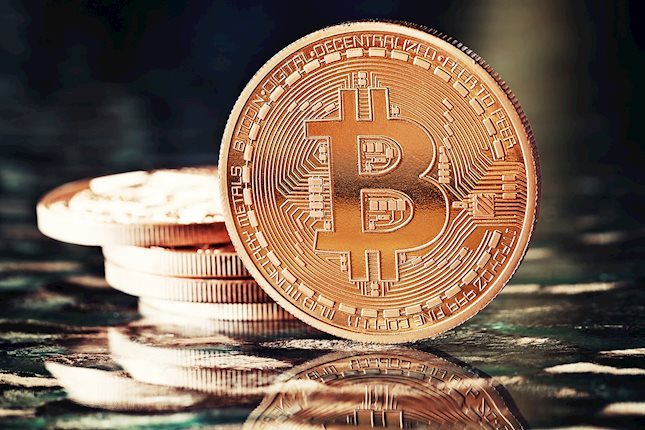The spectacular rally in the cryptocurrency markets has been nothing short of arresting – and also nothing like previous bull cycles in the sector. When Bitcoin (BTC) rocketed to an all-time high of almost $20K in 2017, the rally was driven by retail investors buying into overnight wealth myths and rushing to follow trends. How very different the space looked then.
Most of the large financial institutions like JPMorgan and Goldman Sachs were still warning customers against buying BTC, saying that it would all eventually "blow up" and that it was a "vehicle for fraudsters." While BTC is still being linked to illicit activity by people in high places, remarkable progress has been made.
Just three short years ago, it looked almost impossible to see any sort of convergence between traditional finance and crypto. The lack of regulation made people nervous. Investors lost money left and right, and exit scams, Ponzi schemes, dubious exchanges, and vaporware projects still prevailed.
Yet, cryptocurrency certainly caught the attention of traditional finance and, despite the savage bear market that followed, more and more global banks and FSIs began working on pilot blockchain projects even launching their own tokens to settle payments faster.
As a new administration enters the White House, the coming months will set the tone for this collaboration to continue.
The Increasing Maturity of the Crypto Sector
With giant development strides, clearer regulation, and the birth of the crypto derivatives sector kicked off by CME and CBoE in December 2017, the cryptocurrency market cap now stands at over $1 trillion. Scalability solutions have been proposed and rolled out, security is more robust, and leading companies in the space are even preparing to go public, filing for traditional IPOs.
Institutional investors that were previously at the gates (but that watched the staggering gains with interest) have started to enter one by one. And with an ever-decreasing outlook for the global economy; whether they see digital assets as an inflation hedge, a store of value or the “fastest horse” in the race, the likes of Paul Tudor Jones, Microstrategy, and Manulife are lending additional credibility. And endorsements from some of the wealthiest and most influential people in the world are serving to take BTC even further to the mainstream.
Many analysts are comparing BTC to gold, suggesting that it should be worth a lot more (even as much as $400K) based on its built-on scarcity relative to the precious metal.
Corporate treasuries are also changing as major public companies like MicroStrategy and Square begin listing BTC as a balance sheet asset. With a responsibility to investors to find the most efficient risk/return ratio, the proportion of traditional low-risk assets like cash and treasury bills being held is gradually reducing. BTC is outperforming all other asset classes with its undeniable potential for capital appreciation – and more clients naturally want to see it in their portfolios. Indeed, ARK Investment Management CEO Cathie Wood believes that we will begin to see more and more companies following suit.
Other digital assets are also gaining popularity and Ethereum is being more widely adopted as the platform of choice for institutions and major companies to build on. Just this week, popular social media platform Reddit became the latest to announce a collaboration with the Ethereum Foundation.
Is the Crypto Space Ready for Institutional Investors?
With this rising interest from institutions and legitimization of cryptocurrency as an alternative asset class, is the crypto industry ready for this category of investor? Certainly, the infrastructure continues to be built out, in terms of the sophistication of products and the ease to enter the market.
Major global banks are now able to offer custodial services of digital assets for their clients and use blockchains for payment settlement. And many exchanges in the space are working on improving their offering to provide institutional traders with enhanced capital and risk management capabilities through features such as Portfolio Margin. This allows traders to maximize their margin and cross-collateralize their positions, trading multiple assets from within one account.
These are the types of steps forward that cryptocurrency needs to take if it is to keep the institutional money engaged. And there is still plenty of work to be done. But with steadily declining prospects for the global economy, the dilution of fiat currencies, and traditional low-risk assets providing a near-negative yield, it's likely that institutional interest in BTC and other digital assets will continue to rise – and more and more robust and sophisticated solutions will emerge.
As major financial institutions and investment banks like JPMorgan change their positions on digital assets and predict the transfer of wealth from gold to BTC in the coming years, we're seeing a convergence of traditional finance and crypto like never before. Wall Street is literally piling into BTC with asset managers like BlackRock now gearing up funds to invest. It's taken a three-year shift from "index of money laundering" to "cryptocurrency could evolve into a global market asset".
Love them or hate them (Jamie Dimon still admits that Bitcoin is "not his cup of tea," even after JPMorgan analysts predicted a $146K BTC price target) cryptocurrencies are here to stay. And, as banks start providing digital asset custody and building blockchain technology into their stacks after being given the green light by the OCC, I’ve never been so bullish about the future of cryptocurrencies. Those that fail to invest in digitization will ultimately be left behind.
This material should not be taken as the basis for making investment decisions, nor be construed as a recommendation to engage in investment transactions. Trading digital assets involves significant risk and can result in the loss of your invested capital. You should ensure that you fully understand the risk involved and take into consideration your level of experience, investment objectives and seek independent financial advice if necessary.
Recommended Content
Editors’ Picks

Michael Saylor predicts Bitcoin to surge to $100K by year-end
MicroStrategy's executive chairman, Michael Saylor, predicts Bitcoin will hit $100,000 by the end of 2024, calling the United States (US) election outcome the most significant event for Bitcoin in the last four years.

Ripple surges to new 2024 high on XRP Robinhood listing, Gensler departure talk
Ripple price rallies almost 6% on Friday, extending the 12% increase seen on Thursday, following Robinhood’s listing of XRP on its exchange. XRP reacts positively to recent speculation about Chair Gary Gensler leaving the US Securities and Exchange Commission.

Bitcoin Weekly Forecast: New high of $100K or correction to $78K?
Bitcoin surged to a new all-time high of $93,265 in the first half of the week, followed by a slight decline in the latter half. Reports highlight that Bitcoin’s current level is still not overvalued and could target levels above $100,000 in the coming weeks.

Top 3 Price Prediction Bitcoin, Ethereum, Ripple: BTC to 100k or pullback to 78k?
Bitcoin and Ethereum showed a modest recovery on Friday following Thursday's downturn, yet momentum indicators suggest continuing the decline as signs of bull exhaustion emerge. Ripple is approaching a key resistance level, with a potential rejection likely leading to a decline ahead.

Bitcoin: New high of $100K or correction to $78K?
Bitcoin (BTC) surged up to 16% in the first half of the week, reaching a new all-time high of $93,265, followed by a slight decline in the latter half. Reports suggest the continuation of the ongoing rally as they highlight that the current trading level is still not overvalued and that project targets are above $100K in the coming weeks.

Best Forex Brokers with Low Spreads
VERIFIED Low spreads are crucial for reducing trading costs. Explore top Forex brokers offering competitive spreads and high leverage. Compare options for EUR/USD, GBP/USD, USD/JPY, and Gold.